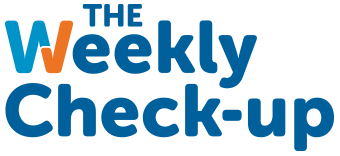Seasonal Affective Disorder on Twitter

Summer has come and gone, the leaves are changing, the days getting shorter, your focus is back to school and or work, and maybe you’re just a little bit blue; could you be suffering from Seasonal Affective Disorder, or the very appropriate acronym SAD?
No, this isn’t a fancy way to describe late summer golden rod allergies. It’s a real psychological disorder where people become depressed (or sometimes just a tad melancholy) at the changing of the seasons. SAD is prominent in arctic countries like Finland and a milder version called subsyndromal SAD affects more than 15% of Americans.
While it has been found that particular individuals are sensitive to the changing of seasons, evidence suggests that humans as a species may experience a seasonal and daily shift in our mood. A new study looking at the Twitter posts at 2.4 million people, across more than 80 countries, has shed some light on how our mood as a species fluctuates over the course of the day and the year. Sociologists developed an algorithm to analyze the Twitter accounts for positive words such as “awesome” and “agree,” as well as emoticons like :-). They also looked for more negative words such as “afraid” and “annoy.” They found that positivity had a peak around breakfast time with the number of positive posts decreasing steadily until the late afternoon after which the positivity would ramp up again in the late evening. These positivity peaks happened later, on average, during the weekend reflecting that we tend to sleep in and stay out late on weekends. They also found that the number of positive messages tended to increase starting around March, when the days began getting longer and peaked and started to decline in September when the days began to get short.
These observations are consistent with a group of frequently studied and complex system that establish our sleep/ wake cycles referred to as the circadian rhythm. Our bodies release different hormones and neurotransmitters depending on the time of day. This clock is set, in part, by the amount of light that you see with your eyes and thus gets slowly reset when the seasons change. These hormones and neurotransmitters can affect our mood greatly, so it is promising what this study found by looking at Twitter.
While this technology is still very young, it has lots of promise to figure out what we, as a population, are doing. Medical advances are driven by being able to figure out who is sick and who is getting better. But convincing people to let you know about their health is complicated and expensive. Social media holds the potential of one day providing a new, cheaper and easier way of looking at the health of our population. Check back soon to see how Google beat the CDC in detecting flu outbreaks by two weeks.
So think twice next time you think your Twitter or Facebook posts are just self-indulgent wastes of time. Scientists and advertisers alike maybe mining gold from your ramblings, so post away! How has social media (Twitter, Facebook, Email, etc.) impacted your health? What sorts of information have you gotten from friends and loved ones from these sources that would not have been possible before these sites became popular?
Be well,
Dr. Bruce Feinberg
Source: http://www.nytimes.com/2011/09/30/science/30twitter.html?_r=1&hp


